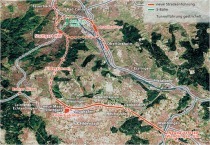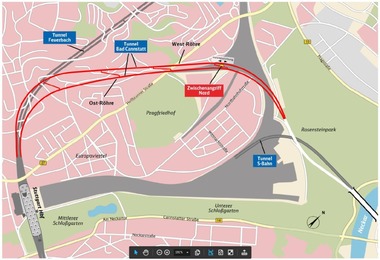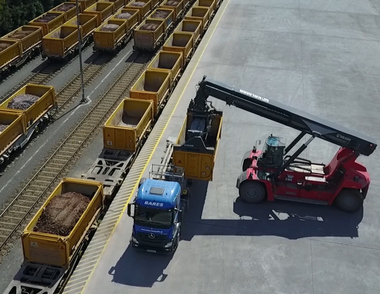Mined Construction for intersecting Structure for Main-Line and Light Rail Access in Bad Cannstatt
The DB Projekt Stuttgart-Ulm GmbH started work in mid-February 2017 at the Rosensteinpark in Stuttgart in the vicinity of the Ehmannstraße employing mining means to produce the intersecting structure for the Bad Cannstatt mainline access and light rail feed. The prerequisite was the permit received from the Federal Railways Office for the 22nd plan modification in plan approval section 1.5 Feuerbach and Bad Cannstatt Feed, which had been applied for at the end of March 2016.
Wildlife Conservation required the Construction Method to be altered
The DB was obliged to switch from the cut-and-cover construction method originally included in the planning process at the Ehmannstraße, after wildlife conservation experts discovered two host trees used by the strictly protected hermit beetle and four other trees possibly containing the insects. Now the tunnel tubes for the intersecting structure, lying within the “Glemswald and Stuttgarter Bucht” flora and fauna habitat (FFH) are being driven by conventional tunnelling. Within the scope of the plan modification, two tree root evaluations on behalf of the DB indicated that the use of mining means would not harm the trees standing above so that the protected insects would be unaffected by the construction measure. Thanks to this modification “negative effects on the FFH area can be precluded”, declared the Federal Railways Office. The change in plan results in additional costs in excess of 20 million euros.
Traffic Relief by reorganising the Logistics
In addition to the change in plan, alterations were also made to the logistics concept to enable inner-urban road traffic to be relieved to the tune of around 6500 truck loads. The earth excavated for the main-line tunnel leading to Bad Cannstatt is carried from the Rosenstein intermediate point-of-attack over the already concreted roadway for the tunnel to the northern intermediate point-of-attack and then transported to the construction logistics centre. The tunnel invert at the Rosenstein intermediate point-of-attack is located roughly 18 m beneath the surface.
First of all, however, the tunnel for the light rail is to be excavated at a depth of 28 m from the intermediate point-of-attack at the holding sidings for the branch structure. Currently as an initial step, holes are being drilled for the advance pipe umbrellas in order to enhance the strength of the rock and secure the tunnel excavation. Only after the S-Bahn tunnel has been furnished with its concrete inner lining, will work commence on driving the main-line tunnel located above.



